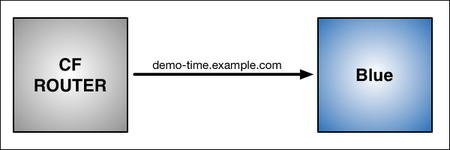This is not a trick question: do you think ultramarine blue is a cool blue or a warm blue? A blue can lean more green and thus yellow, like phthalo blue gs, or more violet and thus red, like ultramarine. But not everyone agrees which direction is warm and which is cool. Itten’s color theory defines blue-green as the coolest color on the wheel, so that would make blue-violet warmer. Plus, the rule of “cool colors recede” would indicate ultramarine is a warm blue as it seems to come forward in a painting. Others say violet, the coolest color on the ROYGBV spectrum line, should mean purply blues are cooler; and if yellow is the hottest color, then greenish blues are warmer. Books, artists, and color theorists don’t see eye-to-eye on this one. Brain melting.
Color Bias of Artist Pigments
Every pigment has a color bias, meaning the color encroaches a neighboring hue on the color wheel. Even the purest primary colors will have a color bias as they can never possess the purity of scattered light. This color bias will affect how the pigment mixes with other pigments and how it looks when thinned with art mediums and applied as a glaze.
The Purity of Artist Colors
Cool Red Pigments for Art
The true primary colors are yellow, magenta and cyan (as can be seen with printing ink). In painting terms, cadmium yellow (pale), permanent rose and pthalo blue closely resemble these primary colors. But every pigment, regardless of how apparently pure, possess a color bias. This color bias will become obvious when a chosen pigment is applied as a thin glaze or mixed in with other colors. Warm Blues in Pigment
French ultramarine is frequently used for its depth of hue. But apply a thin glaze of this blue and it will appear slightly violet. This is because ultramarine blue is slightly biased towards red. Any blue containing red would not be a good blue counterpart with yellow to produce pure greens but would be the ideal counterpart to produce purple or mauve. So in this respect, ultramarine is a warm blue as it is slightly biased towards red. Other warm blues include Winsor blue (red shade), cobalt blue and Indanthrene blue.
Cool Blues in Pigment
By contrast, blues biased towards green are cool blues. Cool blues include cerulean blue, Winsor blue (green shade), pthalo blue, manganese blue, monestrial blue and turquoise. Such cool blues would be suitable for mixing pure greens, for they possess very little red, but would be unsuitable for mixing purple or mauve. Prussian blue is a brownish-blue as it contains quite a lot of color impurities. Warm Reds in Painting
Some reds are biased towards yellow, giving them a glowing or orange cast. Such warm reds include cadmium red, flesh tint, Winsor red, bright red and scarlet lake. Spread a thin film of any of these colors via artist spirits and their yellowish cast will become apparent. As they possess yellow, these reds would be an unsuitable counterpart with blue to produce a clean violet or purple, but would be ideal for mixing orange.
Some reds tilt slightly towards violet in their color bias and are therefore cooler than the reds just mentioned. Cool red pigments include permanent rose, carmine red, alizarin crimson, magenta, quinacridone and rose madder. As these reds contain a little blue, they may not produce clean, dazzling orange if mixed with a chosen yellow. Again, spread a thin glaze of these reds and their violet cast will become apparent. Yellow Hues Cool and Warm
Like blue and red just mentioned, yellow pigments also possess a color bias. Warm yellows (biased towards orange) include cadmium yellow, Indian yellow, cadmium yellow (deep) and Winsor yellow (deep). As these yellows are warm, any would be a suitable counterpart with red for mixing pure orange.
Cool yellows that are biased towards green can be found in lemon yellow, cadmium lemon and Bismuth yellow. Any of these yellows would be suitable for mixing clean, dazzling greens.
Impurities in Artist Pigments
Many popular artist pigments possess a lot of impurities, as they comprise a blend of all three primary colors. Earth colors such as Vandyke brown, yellow ochre and Paynes grey are such examples. But even these have a particular color bias. Burnt sienna tends to have an orange-red cast. Burnt umber has a violet-blue cast. Indian red and Venetian red have a violet-red cast. Some green pigments, again possess a lot of impurities, such as olive green and sap green. But clean greens can be found in viridian, Winsor green and chrome green.
Black pigments possess the most impurities of all, as all three primary colors in approximately equal measure are required to produce them. Spread a thin film of lamp black or ivory black and you will be surprised to find a rainbow of pigments, including yellow, violet and red.
Purity of Color in Art
In order to establish how pure a color is or in which direction it is biased, spread a thin film of this color as a glaze and surprising colors will appear to spread out before you. Even the purest colors possess a color bias. In the same way, impurities will become apparent when mixing a given color with another. A blue that possesses a violet bias, as in the case of ultramarine, will produce a muddy green when mixed with yellow. Some pigments give surprising results when blended with one another.
External Articles on Art Practices
Ultramarine Blue
Ultramarine blue originally signified pigment made of lapis lazuli – a super-precious paint made from a semi-precious stone from Afghanistan. Genuine ultramarine was so expensive that a prize was offered to whoever could develop a synthetic alternative that was a tenth of the cost. Not one, but two, individuals met that challenge in 1828 by creating a silicate of sodium and aluminum with sulfur. Shades from green to violet could be made by tweaking the production process. Manufactured from 1830 onward—and called french ultramarine, artificial ultramarine blue, new blue, or permanent blue—the pigment PB29 became one of the most popular colors on artists’ palettes.
Chemically, lapis lazuli paint and ultramarine blue paint are identical, but they do look distinct. Ultramarine blue has small, uniformly sized particles of a single color, but (being a ground-up natural stone) lapis pigment is a mix of colors and irregularly shaped particles, which have a different texture and reflect light differently. Today, we often mean the synthetic version when we say ultramarine blue, tacking on the specifier “genuine” if we intend the much rarer mineral version. All below reference is to PB29 paint.
Limn Colors ultramarine blue is a saturated, semitransparent, dark, violet-leaning blue. It makes clean violet mixes with cool reds and magentas and is nicely neutralized with siennas or raw umber. Ultramarine’s unique property of flocculation—the tendency of its particles to clump up together—give it a lively granulating texture in washes. Interesting effects can be achieved when mixing ultramarine with a micronized pigment, as some of the heavier blue particles will sink a bit while the lightest particles will float above. You can try this by blending ultramarine blue and quinacridone magenta, then applying in a very wet wash. By the time the violet dries, there will likely be some separation of the two paints.

ULTRAMARINE BLUE USAGE
Ultramarine blue is a safe, lightfast pigment used for ultra-whitening fabrics and papers, achieving that Liz-Taylor-in-Cleopatra eye look, dramatic interior decorating, and of course fine art.
- One of the hues in Pablo Picasso’s blue period was ultramarine blue.
- Ultramarine blue is the base for International Klein Blue, the vivid blue invented in 1960 and used extensively in 2D, 3D, and performance art by Frenchman Yves Klein. His formula included a resin that added a lapis-like luster to the synthetic pigment.
- Vincent Van Gogh painted the deeper blues in Starry Night with ultramarine blue.
- Pierre-Auguste Renoir’s The Umbrellas was painted in two stages, the earlier portion with cobalt blue and the later with ultramarine.
- It’s a who’s who of blue: John Singer Sargent, Paul Cézanne, Georges Seurat, Piet Mondrian, J. M. W. Turner, Claude Monet.






